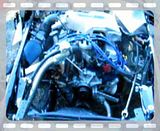AC Bill
Well-known member
Good question.. the first few months after it's arrival, it went pretty slow, as it was so damn cold in the shop. I finally bought a 220v industrial heater, and it made a huge difference in how long I was able to work in the shop. Then there was the frustration of being stalled out on certain parts of the build, because of waiting for parts, that as much as I tried, I could not source in Canada. As mentioned, you can always fall back to drilling or riveting the cockpit panels, to pass the time while your waiting
As to your original question. The crate arrived in February 2009, and I had it licensed for the road in Sept 2010, so about 18-19 months. The painting and final body work is underway, and could be three months, or longer, at the rate it's going. I guess if I was going to do the body and paint myself, as several builders have done, you could probably add hmmm...still maybe3- 4 months to the 18-19 months, I already worked on it.
It really depends how committed you would be to finishing it, and how fussy you are during the build process. Any modifications to the basic build, such as the dead pedal footbox extension, footbox cooling system, etc.. take up time. Some fellows have done a basic build in as little as six months, and that's just evenings and weekends. Usually those builds don't include heaters, wipers, mounting tonneau covers, etc.., and is with new parts, not donor parts. Donor parts take extra time to clean, rebuild, paint, etc, vs pulling a new one out of a box, ready to bolt on.
As to your original question. The crate arrived in February 2009, and I had it licensed for the road in Sept 2010, so about 18-19 months. The painting and final body work is underway, and could be three months, or longer, at the rate it's going. I guess if I was going to do the body and paint myself, as several builders have done, you could probably add hmmm...still maybe3- 4 months to the 18-19 months, I already worked on it.
It really depends how committed you would be to finishing it, and how fussy you are during the build process. Any modifications to the basic build, such as the dead pedal footbox extension, footbox cooling system, etc.. take up time. Some fellows have done a basic build in as little as six months, and that's just evenings and weekends. Usually those builds don't include heaters, wipers, mounting tonneau covers, etc.., and is with new parts, not donor parts. Donor parts take extra time to clean, rebuild, paint, etc, vs pulling a new one out of a box, ready to bolt on.























































